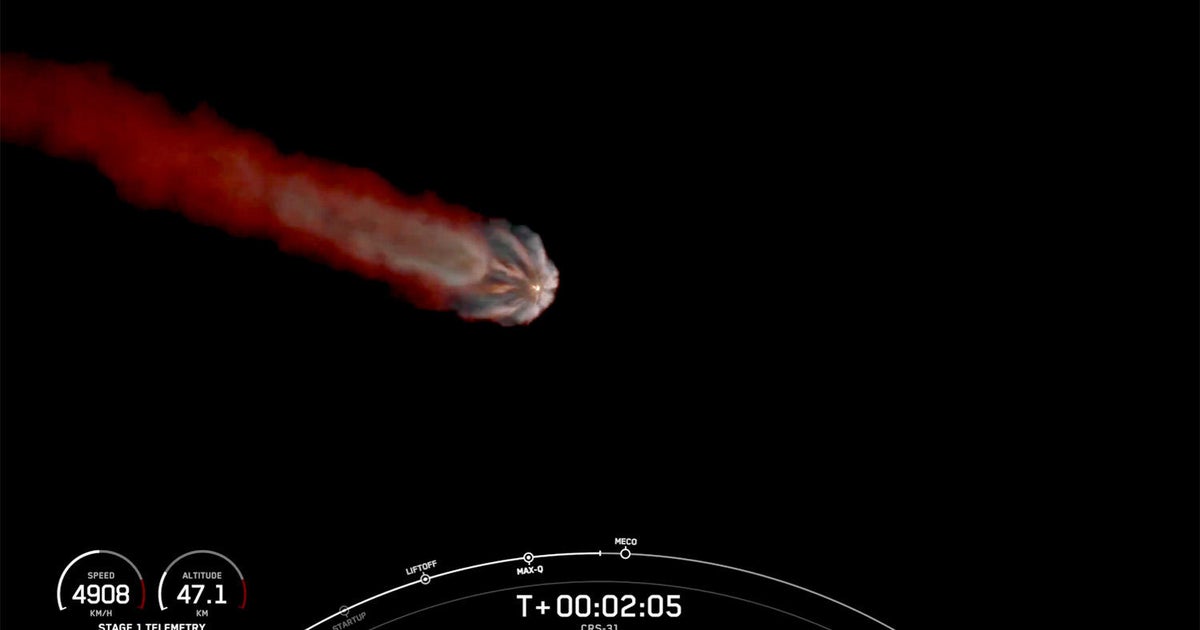CBS News
5 big reasons to invest in gold stocks and ETFs this July

Getty Images/iStockphoto
Gold has recaptured the spotlight in the investment world in recent years — and for good reason. For starters, the precious metal’s allure has intensified amid a range of economic uncertainties and pressures. And, with gold prices recently reaching historic highs and inflation concerns persisting, investors are increasingly turning to this time-tested safe-haven asset for both the potential returns and protection it offers.
And, gold’s other unique properties make it an even more attractive addition to many investment portfolios. Unlike stocks or bonds, gold tends to move independently of other asset classes, providing valuable diversification benefits. And, it often shines brightest during times of market turmoil, acting as a stabilizing force when other investments falter.
But while many investors gravitate towards physical gold in the form of gold bars or coins, digital gold investments can be compelling alternatives. Gold mining stocks and gold exchange-traded funds (ETFs), for example, can provide exposure to the gold market without the hassles of storage and security associated with physical ownership. And, as we close in on July, several factors make these investment vehicles particularly appealing.
Learn more about whether gold investing is right for you.
5 big reasons to invest in gold stocks and ETFs this July
Here are a few key reasons why gold stocks and ETFs deserve a closer look as we close in on July:
Inflation concerns have continued
While the inflation rate has declined significantly compared to its peak of 9.1% in mid-2022, inflation remains stubbornly high right now. The latest US Consumer Price Index (CPI) data shows inflation at 3.3% — which is still above the Federal Reserve’s 2% target.
An inflationary environment typically bodes well for gold, as investors turn to the precious metal to help preserve their purchasing power. After all, gold has gained a reputation as an effective inflation hedge, so adding it to your portfolio in an inflationary environment can have big benefits. And, gold mining stocks and ETFs offer a way to capitalize on this trend without the logistical challenges of owning physical gold.
Find out what your top gold investing options are now.
There may be a seasonal uptick in demand
While there’s no guarantee that the trend will continue, historical data shows that gold often experiences a seasonal uplift in the latter half of the year, typically starting in July. This pattern is attributed to a range of factors, like increased demand from jewelers preparing for the holiday season and cultural events in gold-consuming countries. So, investing in gold stocks or gold ETFs in July could position you to benefit from the seasonal uptick in demand for the precious metal (and the resulting increase in gold prices).
Geopolitical tensions are ongoing
Geopolitical tensions and conflicts are occurring across the globe, and these types of pressures can cause economic uncertainty. In turn, these events tend to drive investors toward safe-haven assets like gold.
And, gold mining stocks can be particularly sensitive to such events, meaning that they potentially offer amplified returns compared to physical gold prices. So, putting some money into gold stocks and gold ETFs could be a smart move right now in terms of maximizing the potential returns on your investment.
Future mining advances could be impactful
Investing in gold stocks provides exposure not just to gold prices, but also to the business of gold mining. This can include benefits from technological advancements, operational efficiencies and exploration successes that may not be reflected in the price of gold itself.
Gold stocks and gold ETFs generally offer the potential for higher returns compared to physical gold. That’s because as gold prices increase, mining companies often see disproportionate gains in profitability, which can translate to higher stock prices — and the potential for bigger returns if you buy in at the right time.
The accessibility and liquidity advantages are valuable
Gold stocks and gold ETFs can also offer you significant advantages in terms of accessibility and liquidity compared to physical gold. These digital assets can be easily bought and sold through standard brokerage accounts, often with lower transaction costs. This flexibility is particularly valuable in today’s fast-moving markets, allowing you to adjust your gold exposure quickly as market conditions change.
The bottom line
Gold stocks and gold ETFs present compelling investment opportunities right now. While these gold assets don’t offer the security that tangible gold can offer, they provide exposure to the enduring value of gold and the potential for enhanced returns. So, whether you’re seeking a hedge against inflation, a safe haven amid geopolitical tensions or simply greater portfolio diversification, these investment vehicles merit serious consideration.
However, it’s crucial to conduct thorough research and consider your individual financial goals and risk tolerance before buying. While gold has historically been a store of value, gold stocks and gold ETFs come with more risk compared to buying physical gold. But by understanding the unique benefits and risks associated with gold stocks and ETFs, you can make an informed decision about incorporating these assets into your portfolio.
CBS News
11/4: The Daily Report – CBS News

Watch CBS News
Be the first to know
Get browser notifications for breaking news, live events, and exclusive reporting.
CBS News
11/4: America Decides – CBS News

Watch CBS News
Be the first to know
Get browser notifications for breaking news, live events, and exclusive reporting.
CBS News
Cargo ship launched to space station with supplies, science gear and holiday treats for crew

SpaceX launched an unpiloted Dragon cargo ship Monday evening, an election eve flight to deliver three tons of crew supplies, science gear and other equipment to the International Space Station, including an unusual wooden satellite, a solar wind monitor and holiday fare for the lab’s crew.
The Dragon’s Falcon 9 rocket blasted off from historic launch pad 39A at the Kennedy Space Center at 9:29 p.m. EST, lighting up the night sky for miles around as it climbed away atop 1.7 million pounds of thrust.
NASA/SpaceX
After boosting the rocket out of the dense lower atmosphere, the first stage, making its fifth flight, peeled away, reversed course and headed back to an on-target landing at the Cape Canaveral Space Force Station while the second stage continued the climb to space.
The landing marked SpaceX’s 57th successful booster recovery at the Florida Space Force station and its 363rd overall, including California flights and droneship landings.
Spaceflight Now
Just under 10 minutes after liftoff, the vacuum-optimized engine powering the Falcon 9’s second stage shut down and one minute later, the Dragon was released to fly on its own. If all goes well, it will catch up with the space station Tuesday morning and move in for docking at the lab’s forward port at 10:15 a.m.
One of the first items on the agenda is a test Friday to determine the Cargo Dragon’s ability to boost the space station’s orbit slightly using its aft-facing thrusters. The ISS is routinely re-boosted by Russian Progress freighters and Northrop Grumman Cygnus cargo ships, but Friday’s test will be a first for SpaceX.
The California rocket builder is under contract to NASA to build a powerful space tug of sorts that can be used to safely drive the ISS back into the atmosphere when the lab complex is retired in the 2030 timeframe. The vehicle is needed to make sure the station breaks up over a stretch of ocean well away from populated areas and shipping lanes.
During the test Friday, the Cargo Dragon’s aft thrusters will fire for about 12 minutes.
“The data that we’re going to collect from this reboost and attitude control demonstration will be very helpful, informing SpaceX analyses on how the system performs,” said Jared Metter, SpaceX director of flight reliability. “This data is going to lead to future capabilities, namely the US de-orbit vehicle.”
Reboost aside, the Cargo Dragon is loaded with slightly more than 6,000 pounds of equipment and supplies, including 2,022 pounds of science gear, 2,119 pounds of crew clothing, food and other supplies, 377 pounds of spacewalk equipment, 525 pounds of space station hardware and 44 pounds of computer equipment.
One of the more unusual payloads: Lignosat, a small wooden satellite using a framework of magnolia panels built by researchers at Kyoto University in Japan and the Tokyo-based logging company Sumitomo.
STR/JIJI PRESS / AFP via Getty Images
“While some of you might think that wood in space seems a little counterintuitive, researchers hope that this investigation demonstrates that a wooden satellite can be more sustainable and less polluting for the environment than conventional satellites,” said Meghan Everett, the ISS deputy project scientist.
“The main objective here is to determine whether wood can be used in space, and to do this, researchers will measure the temperature and strain of the wooden structure and see how it might change in the vacuum environment of space with atomic oxygen and radiation conditions as well.”
As with all station-bound Dragon cargo ships, the crew supplies include fresh food and special treats for holiday meals.
Bill Spetch, ISS operations and integration manager, said the “food kit” includes “citrus, apples, sweet onions, blueberries, radishes, etc,” along with lobster, crab and quail for holiday meals. A variety of cheeses is on board as well as fresh coffee and personal items requested by each crew member.
Mounted in the Dragon’s unpressurized trunk section is the Coronal Diagnostic Experiment, or CODEX, an instrument that will be mounted outside the space station to learn more about how charged particles in the solar wind are heated to millions of degrees and accelerated to enormous velocities, affecting Earth’s space environment and the rest of the solar system.
Inside the station, the astronauts will have a variety of new experiments and instruments to operate and monitor, including one called ARTEMOSS that will examine how Antarctic moss tolerates the space radiation and microgravity environment to learn more about how plants might be used in future life support systems.
The European Space Agency is sending up a space exposure experiment to learn more about how high-tech materials respond to prolonged exposure to the weightless environment and another experiment to study how organic samples degrade when exposed to unfiltered ultraviolet light from the sun.
And in an experiment that could be particularly useful to future astronauts, a small device known as Nanolab Astrobeat, provided by the Malta College of Arts, Science and Technology, will test cold welding technology that could prove useful for repairing leaks or other damage from inside a spacecraft.
The Cargo Dragon is expected to remain docked at the space station for about a month before it returns to Earth with station components needing refurbishment, trash and other no-longer-needed items.






